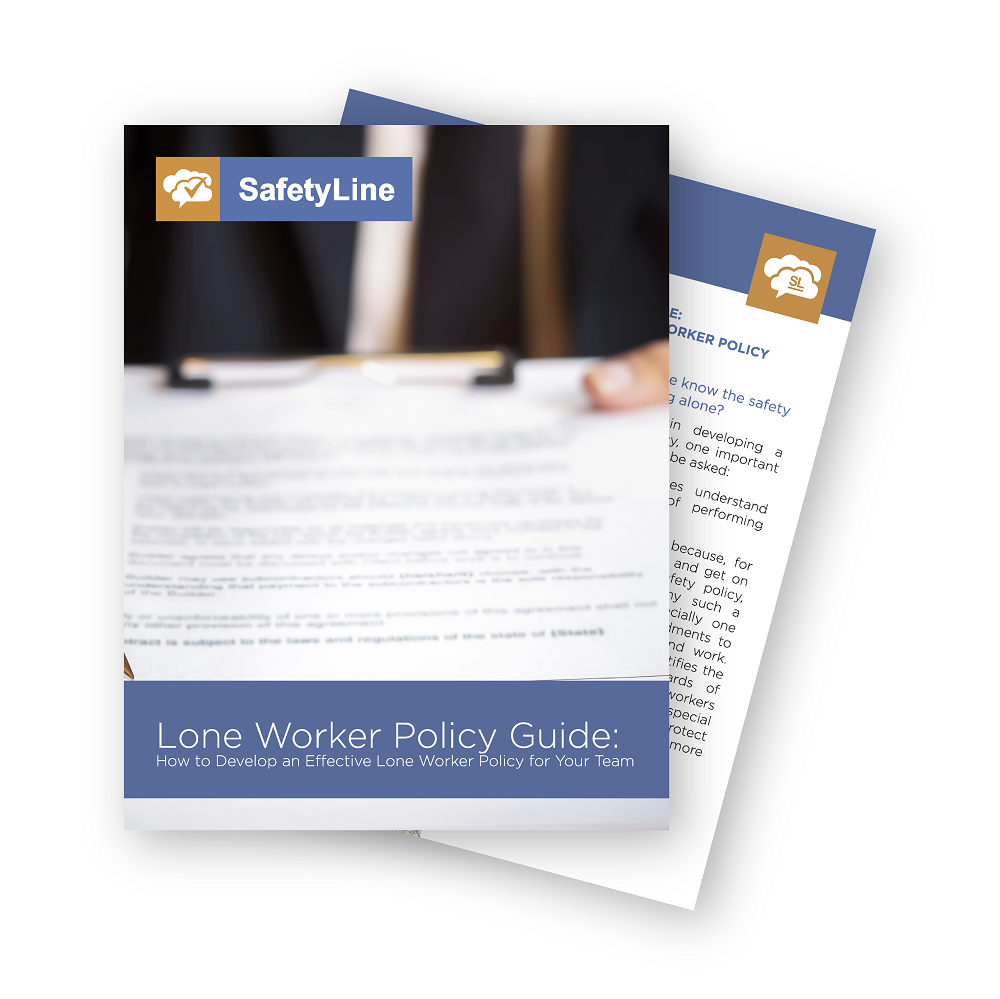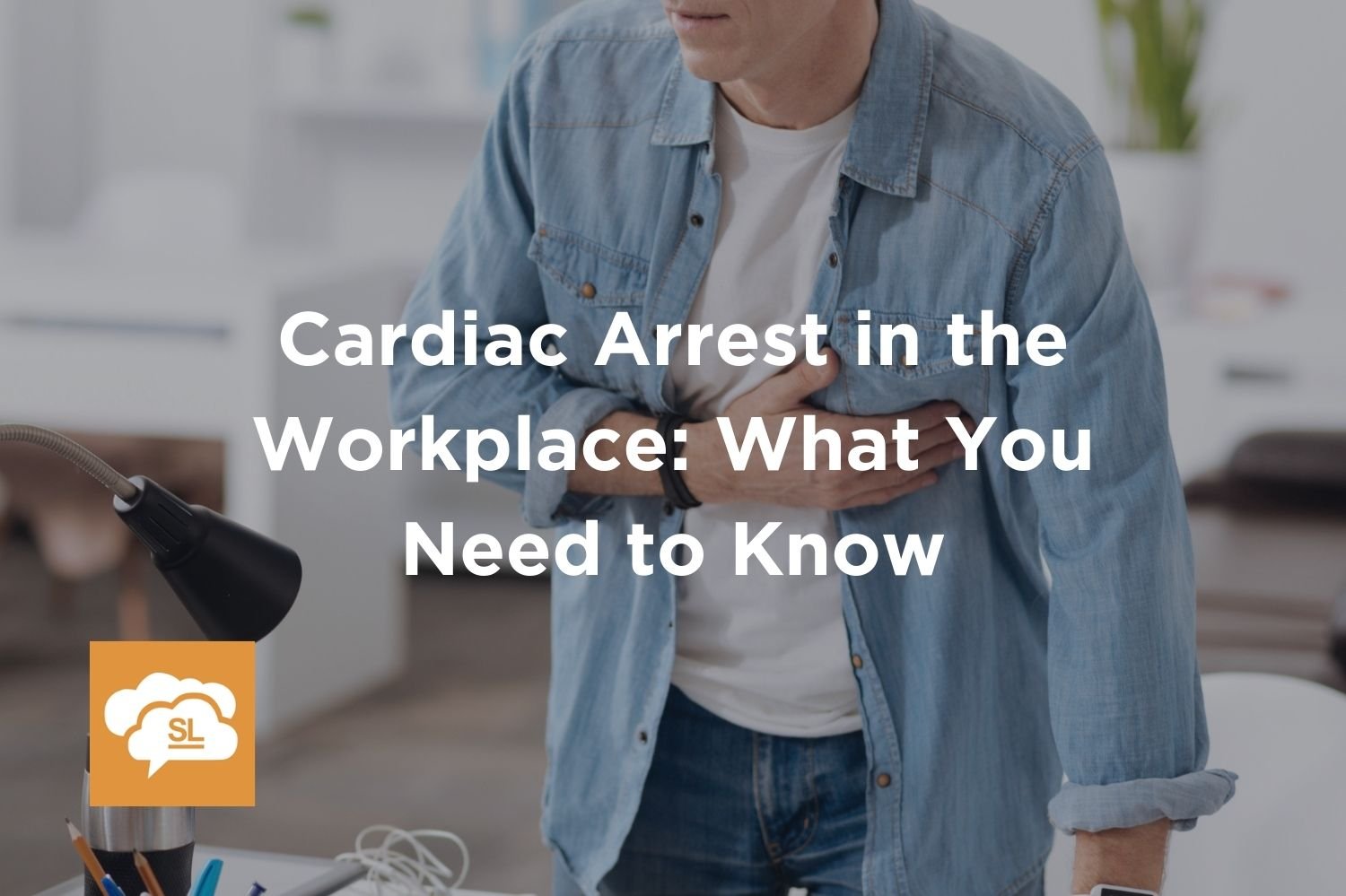Featured Resources
Lone Worker Policy Guide and Template
A lone worker policy is an effective way to ensure that your lone workers are well-educated on your company’s work-alone rules and have extensive knowledge of all workplace hazards that could be encountered on the job.
Hazard Assessment Guide
In the process of doing a hazard assessment for your workplace, it is almost a certainty you’ll learn information about the operational aspects of your organization you were unaware of before the assessment.
View eBook
Develop a Free Lone Worker Program for Small Teams
Developing a free lone worker check-in system is a simple process for small teams that any organization can implement.
View eBook
SafetyLine Blog Categories
General Safety | Lone Worker Safety | SafetyLine News and Updates | SafetyLine Product Updates | Compliance, Policy, and Regulations | Downloadable Resources |
11 Ways to Evaluate Your Lone Worker Solution
A lone worker solution is a system, service, and/or safety device that protect lone workers (people working alone and remotely). It will signal an emergency when the lone worker needs help and it monitors their well-being with safety check-ins. Let’s look at the 11 strategies to evaluate your lone worker solution.
March 2022 Recap: In Other News and What You May Have Missed
Here is all of the occupational safety and health-related news that you missed in March. Welcome back spring! Setting Lone Workers Up for Safe Success, 5 Best Practices for a Mobile-Based Safety Program, Harness the Power of Data and Analytics to Reduce Workplace Injuries and Fatalities, Workers favor more safety training, digitization of programs, and SafetyLine is nominated for a COS award!
What Is Journey Management and Why Is It Important?
Journey management implements plans and protocols to protect these people while travelling. Journey management can address the safety needs of employees who are not only driving for work, but also the security needs of those travelling other ways such as flying and public transit.
Lone Worker Safety and Tracking Using SPOT Satellite Messengers by Globalstar
The most significant benefit of this partnership with Globalstar, quite simply, is that your workers and team members will have reliable and proven satellite communications for lone workers to support SafetyLine’s comprehensive suite of safety features. The SafetyLine and SPOT combination provides uninterrupted location tracking and two-way communications (independent of cellular networks), using SPOT to send and receive text messages, track and share progress with managers and coworkers, map their routes, as well as, if needed, trigger an SOS emergency requesting immediate help.
A Q&A with the Heart & Stroke Foundation - What You Need to Know About Occupational Cardiac Arrest
We spoke to Jeffrey Buhr, Director of Philanthropy and his team at the Heart & Stroke Foundation about why heart health needs to be a priority for employers, what can proactively be done to prevent cardiac arrest in the workplace, as well as a number of other interesting areas related to occupational health and safety.
February 2022 Recap: In Other News and What you May Have Missed
Here we are at the end of February and with-it being Heart Month in North America, there was some focus on the relatively unknown issue of cardiac arrest and heart health in the workplace. Scroll down to see what you missed in safety-related news in February.
Cardiac Arrest in the Workplace: What You Need to Know
Every year, roughly 62,000 Canadians experience a heart attack and stroke which, in many cases, is disabling or deadly. It is also estimated that about 35,000 cardiac arrests take place in Canada annually, and again, these are often fatal. As major causes of death and disability for Canadians, heart disease and stroke are also major occupational health issues in the workplace where cardiovascular health needs to be addressed.
Choosing a Workplace Panic Button System for Your Employees Safety
Panic buttons are an important occupational safety technology goes by many names: duress alarm, emergency signal, SOS alarm, personal alarm, alert button, panic alarm and most commonly, panic button. The reason there are so many names and monikers for this safety device is they are so widely used in a wide range of industries and work. Regardless of what they are called, they all are intended to one thing: raise an alarm in emergency situations when an employee requires immediate help.
January 2022 Recap: In Other News and What you May Have Missed
The 24-hour news cycle has many benefits like constant, real-time news updates as they occur as well as an increase in the overall amount of news we consume. While we are more up to date on the latest news, more than ever, all of these sources, and questioning the legitimacy of these sources, can be overwhelming and time-consuming. With busy personal and professional lives, you may not catch all of the important and relevant safety news of the past month. To help you out, at the end of each month, we will post a curated list of the most important safety-related news so that you don’t miss anything.
Setting Safety Goals for the Year
If you haven’t yet, it’s never too late. It should be a major goal in itself for the employer to set safety goals and objectives for the upcoming year so the safety and health of workers and employees can improve and move forward.
Winter Driving Safety Tips from SafetyLine
Most places in North America are starting to experience the impact of winter, with cold temperatures, snow, and icy roads. Whether you’re driving with your family or for work, safe winter driving is a concern and a priority when the roads start to get slick and slippery. And whether you’re for personal reasons or your job, certain safety steps can be taken that can protect winter drivers in both scenarios, regardless of where you’re going.
Help us Make a Difference this Holiday Season: Nominate Your Favorite Charity for a $5000 Donation
On behalf of the SafetyLine Lone Worker team, we want to wish you and your families a Happy Holidays. Over the past 21 years in business, the SafetyLine team has always had a strong corporate value and commitment to supporting local organizations and helping them meet their charitable goals. Every year SafetyLine Lone Worker and Tsunami Solutions (our parent company) donate to various charities and this year we have set aside $5000, a portion of our donation fund to a registered charity, non-profit, or foundation of your choice.
Online Safety Training and In-person Conferences You Need to Know About in 2022
Online safety courses and safety training in the United States and Canada
In recent years, the prevalence of online safety training opportunities has skyrocketed with a wide range of online training courses available.
To help you navigate and prioritize this wide range of available options, below, we have curated a list of the top safety training resources as well as the best safety conferences in North America.
Lone Worker Incidents in the Workplace: It is More Common Than You Would Think
Since early 2020 due to COIVD-19, the work environment has shifted; it became a place where not only potential physical safety hazards existed, but ones that aren’t visible to the human eye, such as deadly viruses or future pandemics.
With this new, more unpredictable work environment, certain workers became more vulnerable, including healthcare and hospitality employees, as well as those who work alone and remotely.
What does a lone worker look like?
Working Alone: Managing Workplace Safety Issues for Remote Employees
Working alone from home can pose a number of unique risks and challenges. Here’s how to manage workplace safety issues for your remote employees.
Incorporating Fall Protection as the Weather gets Colder
Slips, trips, and falls are kind of a constant workplace hazard regardless of your workplace location, however, with cold and wet conditions impacting most of North America during fall and winter, these types of hazards and accidents become more frequent and severe.
Maintaining Your Lone Worker Safety and OSHA Regulations
Not only do employers and companies have a moral obligation to protect their workers and employees, but they also have a legal one. OSHA regulations regarding lone worker safety are predominantly guided by two core standards.
Why is it important to report safety hazards at your workplace?
Safety hazard reporting is not just a quick email or conversation. Hazard recognition and reporting may require some training and education, depending on which industry you’re in. But regardless of how you implement hazard reporting, make sure that your form includes the following 5 key points of information – but customize to your organizational needs as well.
Building an Effective Workplace Violence Prevention Program
Depending on your industry and local legislation, your workplace violence program may look different from ours, but regardless, there key areas that must be included in a truly effective workplace violence program.
5 Major Steps to Building a Successful Emergency Response Plan
Every workplace, whether it’s an office or a construction site or a patient’s home, has its own safety hazards and risks facing the workers and team members. Emergencies are more likely to take place when these safety hazards are not addressed, increasing the potential for an incident to take place that could harm and even kill an employee. In many cases, emergencies could have been prevented, or at least mitigated, through proactive planning and assessment of existing and potential safety hazards threatening the team.






















